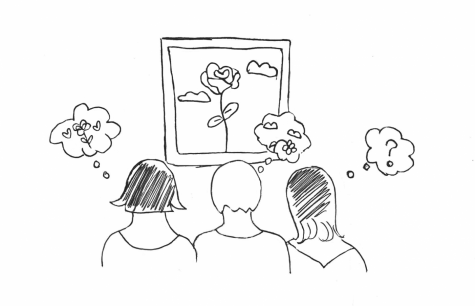Why subjective art criticism is still the best way to examine art
October 27, 2020
Film criticism has been a contentious topic for centuries. Debates on whether there is some objective measure of art date back as far as the Age of Enlightenment, with philosophers like Immanuel Kant and David Hume. Nowadays, anyone can create an online review, making it easier for them to disseminate their opinion regardless of its merit. Even though everyone is entitled to their own opinion, not every opinion is equally valid, especially in regards to film criticism. Some films are considered better than others based on socially-generated, subjective criteria. There is no objective truth to art, but certain criteria should be used to draw subjective conclusions.
Objective film criticism, and more broadly objective art criticism, is like trying to come up with some sort of math equation for an English paper. There is no equation to calculate the right words to put in the right places, just as there is no equation to calculate the right line or the right camera angle to place at a certain point in a movie. Enlightenment philosopher David Hume was a proponent of the subjectivity of beauty.

“Beauty is no quality in things themselves: It exists merely in the mind which contemplates them; and each mind perceives a different beauty,” Hume wrote in his book titled “Of the Standard of Taste and Other Essays.”
Art is felt and judged differently by each person based on their personal views and experiences. This philosophy extends to all art forms, including film, as critics often have very different opinions of the same film.
In a review for “The Dark Knight Rises,” Imagine Games Network (IGN) writer Siddhant Adlakha criticized the film’s representation of the main villain, Bane, who stages a revolution in which the upper-class are thrown from their homes and the lower-class take control of the city.
“[The movie] exploits vague conservative fears of economic justice and the redistribution of [wealth] … but no one in the film, either for or against this revolution [against economic injustice], ever espouses a coherent ideology,” Adlakha wrote in his review.
Adlakha wrote negatively about the film because he believed that its display of economic issues doesn’t make sense in regard to the plot. He critiques the film on behalf of his belief that its presentation of particular ideologies differs so much from reality that it disturbs his viewing experience.
Manohla Dargis, one of the chief film critics for The New York Times, disagrees with Adlakha’s assertion.
“[Christopher Nolan, the director of the film,] isn’t overtly siding with or taking aim at any group (the wily Bane only talks a good people’s revolution), but as he has done before, he is suggesting a third way,” Dargis wrote. “Mr. Nolan doesn’t advocate burning down the world, but fixing it.”
Dargis argues that Nolan has made a nuanced film portraying multiple political opinions in a way that adds to the merit of its plot, in contrast to Adlakha’s distaste for the film’s portrayal of different ideologies.
Neither one of these reviews is objectively correct. They both paint a very different image of the same film due to their different perspectives. Author Robert Warshow discusses this phenomenon in his book, “The Immediate Experience: Movies, Comics, Theatre & Other Aspects of Popular Culture.”
“A man goes to the movies and the critic must be honest enough to admit he is that man,” Warshow wrote.
No one can ever be fully free of their biases as hard as they may try, and to critique art fairly, they must be willing to acknowledge that.
Even though personal biases must be accounted for, certain metrics can and should be used to critique film. The quality of screenwriting, acting and cinematography can be used to draw conclusions about why an aspect of the film was good or bad. However, the quality of those elements is based on communal perspectives about what constitutes good character development, plot nuance or shot selection. These ideas can change over time and there is no objective metric to determine to what extent those ideas make the movie any better. Cinematography that was revolutionary 50 years ago would be considered static and boring if used today.
People like to be right, but attempting to critique art objectively only serves to shut down the opinions of others who might feel something different. In Immanuel Kant’s book, “Critique of Judgment,” which focuses on his view of aesthetics, Kant explains the inherent selfishness of trying to place objective worth upon art.
“When [someone] puts a thing on a pedestal and calls it beautiful, he demands the same delight from others. He judges not merely for himself, but for all men, and then speaks of beauty as if it were the property of things,” Kant wrote.
We need to start accepting that the opinions we bring into a film are going to affect the opinions we bring out of it. Ultimately, our experiences and personal biases will inevitably play into how we view media and it is necessary to acknowledge that.























